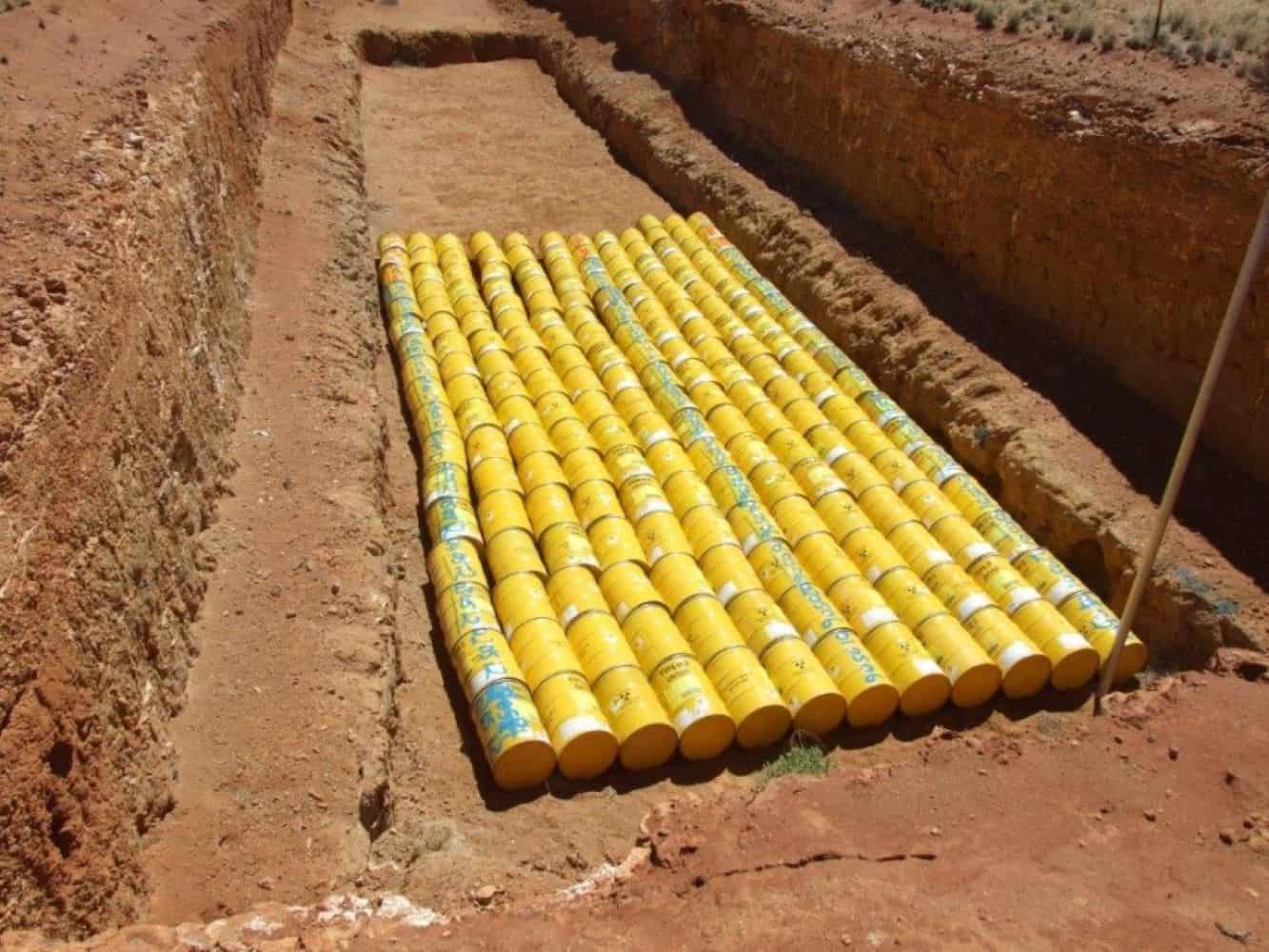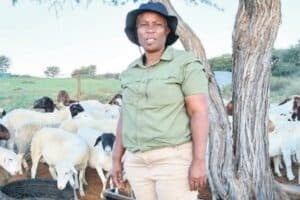Vaalputs to be upgraded for high-grade nuclear waste storage.

When Dawie Burden, a livestock farmer from the Kamiesberg in the Northern Cape, went to open his gate the other morning, he found a notice stuck to it with the heading: “Environmental Impact Assessment Process”.
It was from an environmental consultant informing stakeholders of a study related to plans to store spent nuclear fuel at the government’s Vaalputs storage facility, located about 10 km from his farm.
This came as a confirmation of plans that he and his neighbours had only read about in the media.
Vaalputs has been in existence since the 1980s but to date, only low- and intermediate level nuclear waste has been disposed of at the site, says Dave Nicholls, chairman of the South African Nuclear Energy Corporation (Necsa).
Since 1985, nearly all the nuclear waste from Koeberg – including old fuel racks and protective clothing used at the plant – as well as similar waste from Necsa’s Safari research reactor at Pelindaba, has been disposed at the site in steel and concrete drums.
ALSO READ: Ramokgopa wants to expand South Africa’s nuclear programme
This constitutes low-level nuclear waste. Intermediate-level waste includes, for example, filters and resin, which are cast into concrete drums.
These are transported by road, via the R355 between Calvinia and Springbok, to be placed in a trench at Vaalputs and later covered with clay.
The area is very remote, with limited cellphone reception and the condition of the road leaves much to be desired, says Burden, who speaks on behalf of the Kliprand Agricultural Association – one of five such associations in the area. Nonetheless, government’s minimal communication over the last 40 years has only been with one of the other associations, says Burden.
“They sometimes hold meetings, but these are held in communities and all that is discussed are bursaries for students and job opportunities. Our safety concerns are not addressed,” says Burden.
ALSO READ: Ramokgopa wants an ‘idiot’s guide’ on nuclear to be created for South Africans
“The emergency plan for transporting the waste relies on calling for help if a truck carrying the nuclear waste is involved in an accident due to the poor road conditions.” But, what if there is no signal? It is one thing when only low- and intermediate level waste is being transported, but spent nuclear fuel?
Nicholls explains that the waste currently disposed of at Vaalputs has a half-life of 30 years. This means the risk of radiation from contact with the material will be reduced by half in 30 years. To be completely harmless, it will take ten times that long – about 300 years.
The spent fuel is a different matter. “They glow when they are removed,” says Nicholls.
This type of waste decays rapidly in the first ten years, but it will take more than 100 000 years to return to the same level of radiation found in uranium in its natural form, he explains.
ALSO READ: Will R9bn nuclear reactors lower SA’s energy costs?
‘Interim’ measures
Until about five years ago, the spent fuel at Koeberg was stored in a specially designed pool on site. The volume is relatively small. “If you stack all the spent fuel that has been used at Koeberg alongside each other, it would not be the size of a tennis court,” says Nicholls.
About five years ago, Eskom began removing the oldest spent fuel and is now storing it in steel cannisters, 5 metres long and a few metres wide, on site.
However, government has decided to store the high-level nuclear waste from Koeberg – and potentially from any other nuclear plants that may be built in South Africa – at a central interim storage facility to be constructed at Vaalputs.
It remains interim because, sometime between 50 and 200 years from now, it will be moved to a final disposal site several hundred meters underground. “It is essentially a mine,” says Nicholls.
All of this is strictly regulated by the International Atomic Energy Agency, and the measures followed to safely store nuclear waste are the same all over the world, says Nicholls.
Currently, the licence issued by the South African National Nuclear Regulator (NNR) permits only the disposal of low- and intermediate waste at Vaalputs. Until recently, Necsa was the licensee, but earlier this month, the management of the nuclear waste was transferred to a specially created entity, the National Radioactive Waste Disposal Institute (NRWDI).
The NRWDI will only be allowed to store high-level waste at Vaalputs once it has satisfied the NNR that it complies with all the requirements to do it safely. This is why it has now embarked on the environmental impact study that Burden has been notified of.
Nicholls explains that the interim disposal will involve the construction of a huge concrete slab, upon which the steel cannisters will be stacked at ground level.
Burden recognises it is unlikely that the farmers’ concerns will result in the government changing its intention to store the spent nuclear fuel at Vaalputs. All they are asking for is transparency, good governance, and monitoring.
“The ecosystem in Namaqualand is very sensitive, with unique biodiversity,” he says.
He estimates that there are more than 200 farms in a 50km radius around Vaalputs. These produce livestock – cattle, sheep and goats. About 20% are slaughtered locally, and the rest at abattoirs further away in the Western Cape, and from there distributed by retailers across the country.
“The likelihood of radiation may be low, but the impact can be huge,” says Burden.
Farmers are concerned that even the slightest suspicion of something going wrong at Vaalputs could damage the image of the products they send to the market.
This article was republished from Moneyweb. Read the original here.






